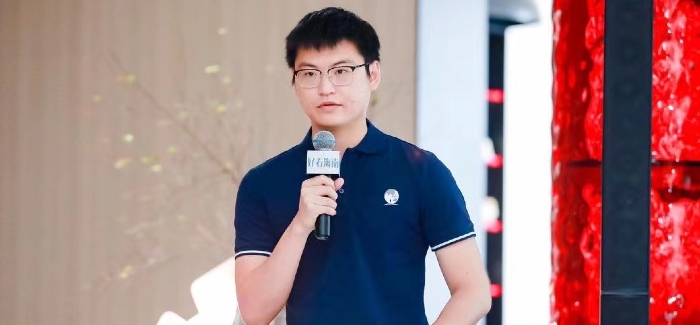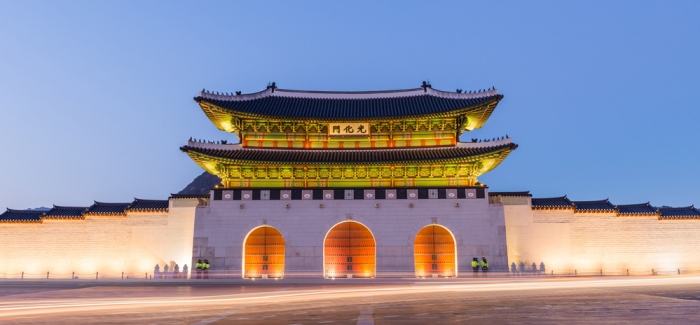Known as the land of the rising sun, Japan combines rich cultural traditions with cutting-edge technology and economic power. Thanks to the unique culture and strong higher education system, a large number of international students choose to study in Japan each year, taking up the chance to experience immersion in Japan’s buzzing cities, intriguing traditions, and famously complex language.
Many of the most popular things to do in Japan are located in Tokyo, which is also where many international students will be based. But regardless of where you study in Japan, you’ll also have the chance to travel more widely during your time in the country – and this is highly recommended. Popular alternatives to Tokyo include Osaka and Kyoto – both of which join Tokyo among the world’s top 100 cities for students.
To celebrate the launch of the latest QS Asia University Rankings, here’s a look at the top 10 things to do in Japan as an international student…
1. Explore Japan’s capital city, Tokyo
Top three universities in Tokyo: University of Tokyo (ranked 13th in the QS Asia University Rankings 2018), Tokyo Institute of Technology (14th), Keio University (joint 36th)
A vibrant city full of contrasts between old and new, Tokyo is a must-see for anyone visiting or undertaking study in Japan. Ranked seventh in the QS Best Student Cities 2017, Tokyo has also been named one of the safest cities in the world by Numbeo.
In addition to famously superb cuisine (and more Michelin stars than any other city), Tokyo offers infinite possibilities for exploration – among the fresh fish markets, the inner-city parks, the famed kabuki theatres and so much more. Whether you’re fascinated by the country’s Buddhist heritage or want to sing your heart out in one of the city’s famous karaoke bars, Tokyo will not disappoint.
2. Visit Kyoto and its beautiful temples
Top universities in Kyoto: Kyoto University (17th in the Asia ranking), Ritsumeikan University (170th), Doshisha University (194th)
With 2,000 Buddhist temples and Shinto shrines, 17 UNESCO World Heritage Sites and even more museums and palaces – not to mention the famous Golden Pavilion – Kyoto is a city full of history. It’s also home to one of the best universities in Japan, Kyoto University, which is Japan’s fourth-highest entrant in the QS Asia University Rankings.
Included among the world’s top 100 cities for students alongside the nearby cities of Osaka and Kobe in the QS Best Student Cities 2017, Kyoto offers an opportunity to experience Japanese life and culture on a slightly less overwhelming scale compared to Tokyo. If you’re looking to study in Japan without the chaos of the capital, Kyoto is likely to be high up on your wish-list – it’s got all the traditional temples and gardens you could want, alongside a welcoming and vibrant student community.
3. Soak in a Japanese hot spring
Location: All over Japan
Submerge yourself in a Japanese hot spring and you’ll feel yourself instantly relax – even if there is a slightly sulphuric aroma in the air! An integral part of Japanese life, the springs are enjoyed by young and old, tourists, monkeys and locals alike (although perhaps not all at the same time).
As well as indoor pools, there are also many outdoor springs situated against spectacular mountain backdrops, near waterfalls or close to rivers. But if you want the full experience (and a real treat), consider booking yourself into an onsen ryokan – a traditional inn complete with hot springs.
Bath before and after dinner, even before and after breakfast, and you’ll feel rejuvenated like never before. You’ll just need to leave your modesty at the door – most Japanese people bathe naked.
4. Walk Japan’s ancient pilgrimage trails
Location: Shikoku Island
It’s 1,200 kilometers long and takes weeks to complete, so you may not wish to walk the entire loop of Japan’s 88 temple pilgrimage in one go, but even walking a small part of this trail around Shikoku Island should be high up on your list of things to do in Japan during your studies.
Small inns along the way provide accommodation and food, and if you do opt for the traditional on-foot approach (as opposed to the slightly more convenient tour bus), why not complete the experience by dressing up in traditional attire: a white coat (hakui), purple scarf (wagesa), conical straw hat (sugegasa) and walking stick (kongōtsue)?
5. Catch a sumo wrestling match
Location: All over Japan
There’s more to sumo wrestling than two overweight men in strange underwear attempting to throw each other out of a ring – sumo wrestling is an incredibly ritualistic, strategic and traditional Japanese martial art.
Japan is the only country in the world where sumo wrestling is practiced professionally, so make the most of the opportunity, and head to the ringside to get in on the action. It may help to take a local along with you, who can help explain what’s happening.
Did you know…? In order to bulk up for the ring, sumo wrestlers consume around 10,000 calories per day – that’s about four times more than the average male.
6. Escape to Hokkaido
Top universities in Hokkaido: Hokkaido University (31st in the Asia ranking)
Whether you’re into skiing, snowboarding, rafting, canoeing, whale watching, mountain climbing, fishing or cycling – Hokkaido is an outdoor enthusiast’s playground. It’s also arguably the world’s leading destination for ice sculptures, and a photographer’s paradise.
The second largest of the islands which constitute Japan, and the 21st largest island in the world, Hokkaido is towards the north of the country and exhibits four distinctive seasons, each bringing its own unique attractions for the many visitors who flock to the island year-round.
With national parks to trek through, hot pools to soak in, festivals to enjoy, and stunning scenery to gasp at, Hokkaido makes for an enjoyable getaway from the hustle and bustle of the country’s major metropolitan areas. The capital city of Hokkaido is Sapporo, which welcomes around 14 million tourists each year.
7. Try taiko drumming and other traditional activities
Location: All over Japan
You’ll probably hear them before you see them, and the deep rumble of Japanese taiko drums will be hard to forget. Used in warfare to motivate troops, taiko drums are traditionally made from ancient trees, hundreds of years old.
Many of the top universities in Japan have student clubs which will allow you to try your hand at various Japanese activities, including taiko. Other traditional pastimes include painting, calligraphy, origami (paper sculpture) and ikebana (flower arranging). There’s no better way to experience the culture of your host country than to immerse yourself in it – so what are you waiting for?
8. Visit Himeji Castle
Location: Hyōgo Prefecture
Top universities in Hyōgo: Kobe University (60th in the Asia ranking)
It may not quite have fairytale turrets, but one look at Himeji Castle will take your breath away. Taking pride of place on a hilltop in the Hyōgo Prefecture of Japan, Himeji is justifiably recognized as a UNESCO World Heritage Site and a national treasure.
Also known as White Heron Castle due to its brilliant white exterior, the castle is about an hour’s drive from Kobe (home to another of Japan’s top universities), and an easy day trip from either Kyoto or Osaka. It’s best visited in spring, when the cherry blossoms are in bloom, providing a stunning natural backdrop for a spectacular architectural feat.
Did you know…? Himeji Castle has a maze of paths leading up to its main keep. These were designed as a defensive element, leading enemies round in spirals and down dead ends.
9. Go to a sakura matsuri (cherry blossom party)
Location: All over Japan
If the unique culture, delicious food, efficient transport systems and the mix of city life and spectacular scenery isn’t enough to entice you to study in Japan, then perhaps the attraction of springtime cherry blossoms will convince you. Setting public parks alight, and framing temples and palaces with natural beauty, Japan’s cherry blossom season is truly a sight to behold.
Each year, Japan’s cherry blossom bloom occurs between the months of March and May, depending on the region. You can even use this handy guide to time your hanami (flower viewing) visits.
10. Explore Osaka by night
Top universities in Osaka: Osaka University (ranked 15th in Asia), Osaka City University (137th), Osaka Prefecture University (joint 140th)
Japan’s third largest city, Osaka was heavily bombed during the Second World War, and has since been rebuilt with numerous concrete structures and elevated highways. While many historic buildings were lost, the city’s legacy as the commercial capital of Japan nonetheless lives on, ensuring Osaka is full of life both day and night. Experience the bright lights and nightlife of this dynamic city and, if you’re game, step into one of the karaoke bars for a real Japanese experience.
Osaka is also known as the “nation’s kitchen” – if that’s not an excuse to gorge on fresh local food to your heart’s content, we don’t know what is.
More top things to do in Japan:
- Climb Mount Fuji
- Visit Hiroshima Peace Museum
- Ride the bullet train
- Learn how to use chopsticks properly!
- Drink some sake (rice wine)
This article was originally published in 2009. It was updated in April 2015 and again in October 2017.
Want more content like this? Register for free site membership to get regular updates and your own personal content feed.











